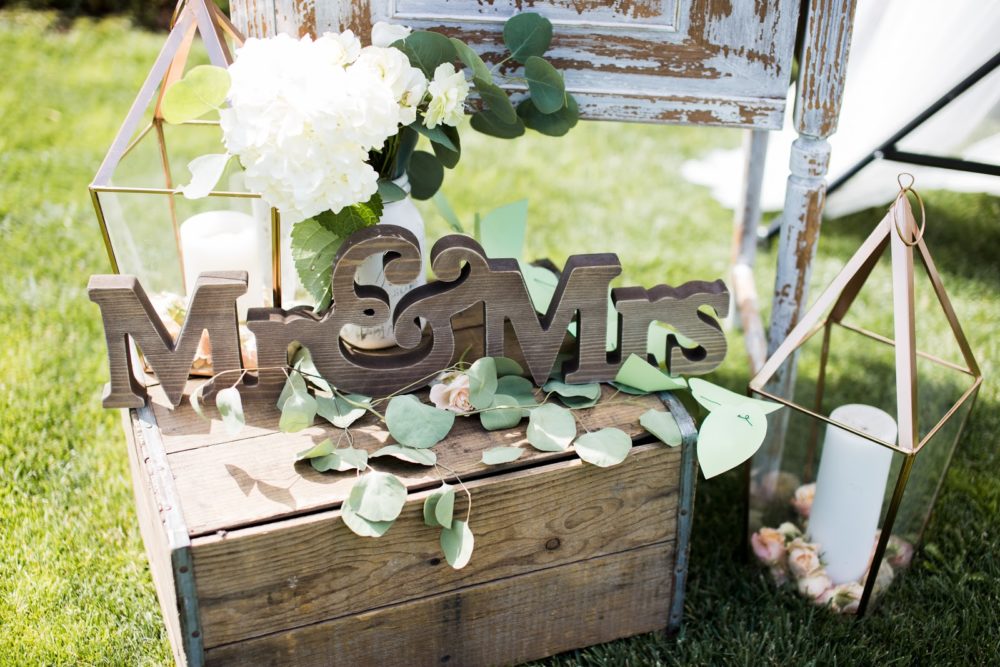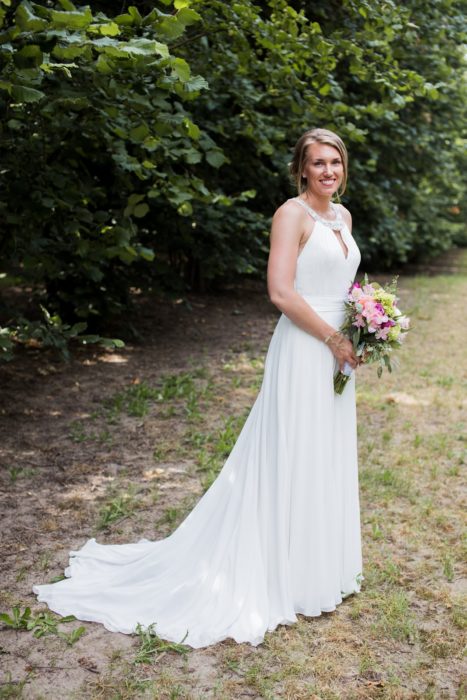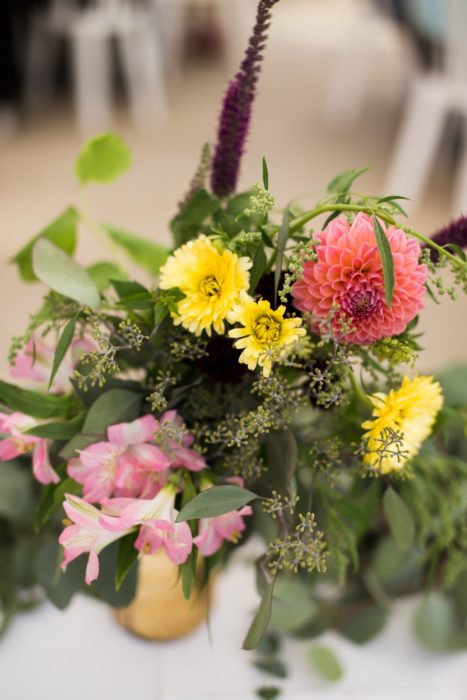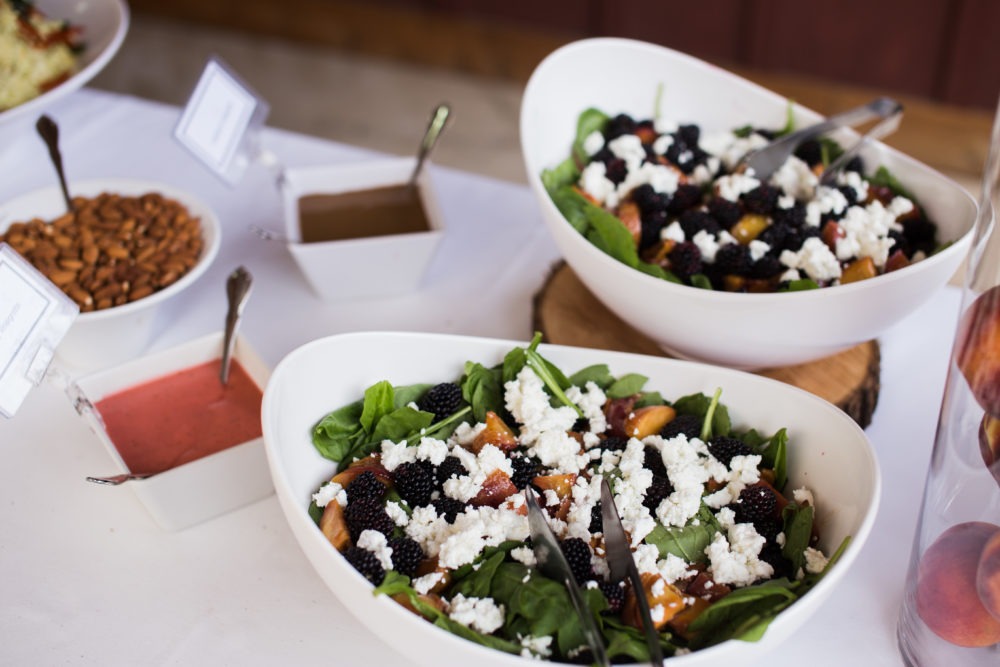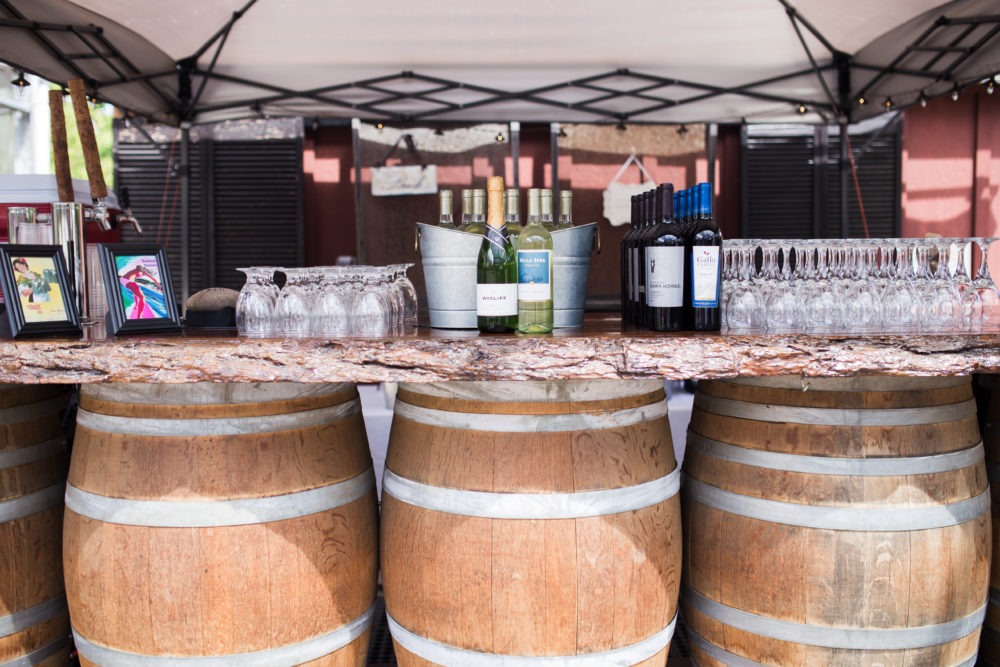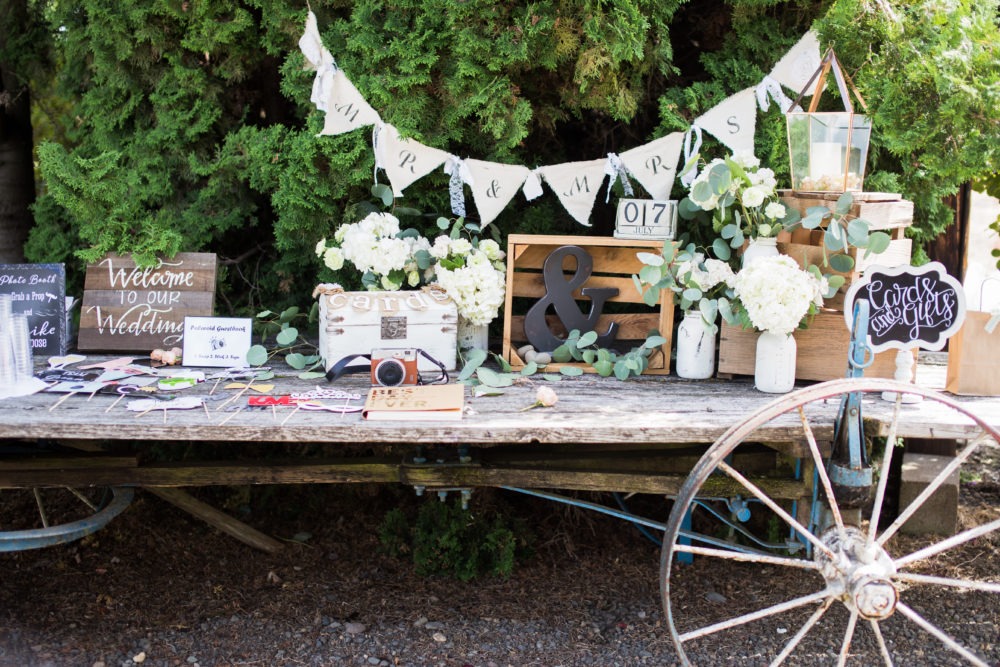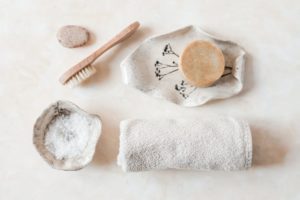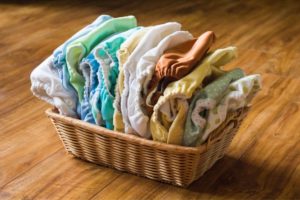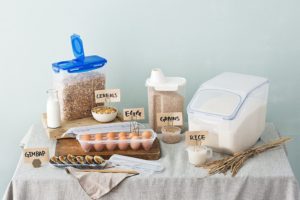Weddings are such fun celebrations of love, family, and friends. While there are many approaches to planning a wedding, for my husband and I, we wanted to throw a huge party for our favorite people in a way that represented our personalities. Every decision we made was based not on if it was a wedding tradition or a popular trend but based on if it matched our identities.
For me, a big part of my identity is sustainability.
However, weddings are a $50 billion a year industry, filled with lavish ceremonies, food, and decorations. Some research has shown that an average wedding creates 400-600 pounds of waste and emits an equivalent of what 4-5 people do in a year. Planning an eco-friendly wedding would be no easy task.
While there were things we could have done better to reduce our environmental impact, in the end we were able to pull off a zero waste wedding with a reduced impact that was still completely fabulous! Read on to learn more about eco friendly wedding ideas. You might even find some great ways to save money on wedding dresses, decor, food and more!
[line]
The Eco Friendly Wedding Dress
[column type=”1/2″ last=”true”]
Facts
- Americans throw away 32 billion pounds of textiles (clothing) a year
- It takes about 1,500 gallons of water to manufacture one t-shirt and a pair of jeans (that’s how much water you drink in 13 years)
- Extending the life of clothing by 3 months will decrease the carbon footprint by 10%[/column]
My Story
Unlike some women, dress shopping gave me extreme anxiety. I was afraid of pushy sales people that would try to force me into something that didn’t feel right.
Luckily, I stumbled upon a small wedding dress consignment shop in Portland. After a quick search, I found that Brides for a Cause is a non-profit consignment dress shop that gives proceeds back to women’s charities. Environmentally conscious AND empowering.
They had hundreds of dresses in just about every style you could imagine. It was a laid back atmosphere with supportive and helpful sales people that gave me all the space I needed. I ended up purchasing my dress for $500 (which was originally $2000). I felt great because I loved the dress and the fact that I could keep a clear conscious knowing I purchased a pre-loved sustainable wedding dress and supported a good cause.
My Advice
Shop pre-loved. You can find an eco friendly wedding dress and still have your dream dress.
The textile industry is a big polluter. Americans shopping habits that support fast fashion and discarding clothing in order to keep up with trends creates a significant amount of waste.
While shopping consignment may not be a glamorous, champagne-filled, Say Yes to the Dress experience, spending your money at a local, non-profit shop like Brides for a Cause will do a lot to decrease your wedding’s carbon footprint. Afterall, 42% of domestic emissions come from the production, transportation, and disposal of materials and goods. Purchasing pre-loved items reduces the emissions, energy, and water consumption related to manufacturing. And if that doesn’t sway you, consider all the money you will save!
[line]
The Flowers
Facts
- Over 1.27 million shipments (1000 stems each) of mixed bouquets were imported into the U.S. in 2017, primarily from Columbia and Ecuador.
- 36% of chemicals used on flowers in Columbia were rated as “extremely” or “highly” toxic by the World Health Organization in 2005.
- A large percent of the carbon footprint from the floral industry comes from the refrigeration during shipping and storage as they make their way to the U.S.
My Story
Receiving cut flowers as a gift has never been my thing. I’ve always been weary of the commercial floral industry. The amount of fertilizers and pesticides used to grow those flowers is scary. When it came to centerpieces and bouquets for our wedding, I wanted to avoid cut flowers but I didn’t know of a good alternative.
I was about to give up hope when one night I was scrolling through my Instagram feed and an ad for a local wildflower farm appeared. Until that moment, I never thought about looking into local farm to purchase flowers. To my surprise, they provided native, in-season, and sustainably grown wildflowers for a very reasonable price. Eight buckets of flowers and greenery cost $350. This covered 24 tables, 5 bouquets, and 7 boutineers.
My Advice
Look for alternatives to flowers, but if going that route, shop local and do your research to find eco friendly flowers- so to speak.
When searching for alternatives to the emission and chemical heavy commercial floral industry, first scour Pinterest for creative ideas and talk to your local rental decor shops for centerpiece ideas that replace flowers (think books, candles etc.).
If you want to have flowers for centerpieces or bouquets, look into wildflower farms. Check out local farmers markets and talk with the vendors about their growing practices. Always go with flowers that are in season, preferably grown in your area, and don’t require heavy chemicals or fertilizers. Additionally, look into nearby retirement homes or hospitals where you can donate the flowers after the wedding so they can continue spreading joy!
[line]
Food & Alcohol
[column type=”1/2″]
Food Facts
- 15% of Oregon’s consumption-based greenhouse gas emissions comes from purchasing food. This is the second highest emitter behind vehicles.
- The top three foods with the highest overall carbon footprint (from production, processing, and packaging) are meat, fish/seafood, and dairy.
- $218 billion in the U.S. is spent growing, processing, distributing, and prepping food that is ultimately never eaten.[/column]
[column type=”1/2″ last=”true”]
Alcohol Facts
- Wine consumption in Oregon produces about 84,500 metric tons of CO2 annually. Beer produces 202,700 metric tons.
- 23% of the carbon footprint of the wine industry comes from packaging.18% of the carbon footprint comes from growing the grapes. An additional 18% comes from retail and home refrigeration
- 40% of the carbon footprint from the beer industry comes from packaging 22% of the carbon footprint comes from the raw materials used to make beer. 18% comes from refrigeration[/column]
My Story
Having delicious food was important for me and my husband. Next to picking the venue, choosing the caterer was the next hardest decision. Trying to find food that tasted good, at a reasonable cost, that also met my goals of either being local or providing waste reducing options was tough.
My husband and I met while attending school at Willamette University and they happened to have a great sustainable food service. I was reminded of this when I overheard another couple at a wedding show, talking about their caterer: Bon Appetit. My heart begin to race with excitement and I knew this was the opportunity I was looking for.
Bon Appetit was able to provide locally sourced, seasonal dishes and strived for zero waste in their kitchens and at events. As a bonus, they were able to coordinate the rental of linens, tableware, and dishes. By using durable items, we saved money, effort, and emissions.
As for the drinks, we are lucky enough to know a good friend who brews his own beer in Salem and someone who works for a winery in California. Both were attending the wedding so they offered to bring it along with them. Drinks coming straight from the source eliminated the middleman, reducing emissions from transportation which is one of the largest contributors to the carbon footprint.
My Advice
Find food grown with sustainable practices. Limit meat options. Consider in-season and local if possible.
According to studies, one of the largest environmental impacts of food comes from the production practices. The best thing you can do to cut your carbon footprint would be to find a caterer, brewer, and vineyard that sources sustainably grown and harvested foods. Additionally, if you limit the meats, seafood, and dairy, you will also reduce associated emissions.
Finally, the next step would be to think local, seasonal, and waste free. By not letting food go to waste (either by taking it home, sending home with guests, or donating to a local shelter) you will reduce emissions associated with disposal but also you won’t be wasting the water and energy it took to produce the food in the first place.
Eco Friendly Decorating Tips
Facts
- The production, transportation, and disposal of materials contributed to 42% of all domestic emissions (US EPA, 2016). That is almost double the emissions related to transportation in the U.S.
- 98% of all emissions come from the upstream impact of resource extraction, production, and transportation. Only 2% comes from disposal of products.
- Using cotton tablecloths over paper (disposable) tablecloths reduces energy use by 35% according to the Danish Textile Association.
My Story
Our venue was a nursery that was already so beautifully decorated with gorgeous plants that we didn’t need much additional decor. I only budgeted a small amount of money to decor and I needed that to stretch.
Craigslist and Facebook Marketplace were great places to find used items in great condition.
Rented decor included linens and dishes, a photo booth backdrop and props, guestbook/gift table decor, vases, and lawn games. Pre-loved decor purchased online included various chalk signs, paper flowers, and props.
My Advice
Buy pre-loved or rent reusable items.
Here is a big opportunity to create an eco friendly or zero waste wedding. Avoiding disposable dishes, utensils, and linens will reduce emissions during production and disposal. Additionally, purchasing used and rented decor items will typically save you money and will certainly save emissions.
It is important when making purchases that we first, shop for quality used items where possible. If buying new, purchase durable, long lasting items that can be used over and over. This is true when planning a wedding and throughout our daily lives.
[line]
All photography in this article was taken by Sarah and Emily Photography, of Salem, Oregon.
[line]

